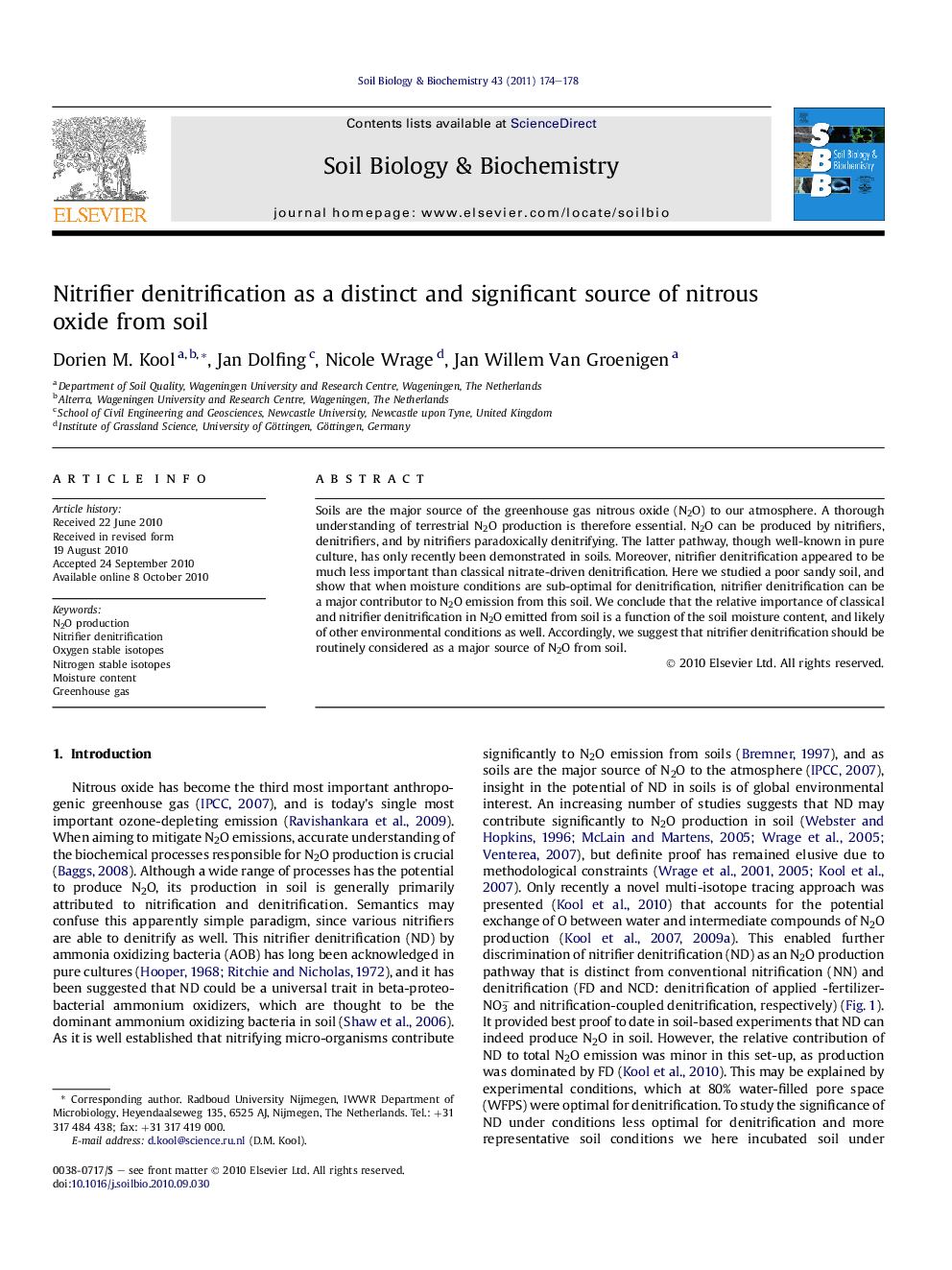| کد مقاله | کد نشریه | سال انتشار | مقاله انگلیسی | نسخه تمام متن |
|---|---|---|---|---|
| 2025719 | 1070007 | 2011 | 5 صفحه PDF | دانلود رایگان |

Soils are the major source of the greenhouse gas nitrous oxide (N2O) to our atmosphere. A thorough understanding of terrestrial N2O production is therefore essential. N2O can be produced by nitrifiers, denitrifiers, and by nitrifiers paradoxically denitrifying. The latter pathway, though well-known in pure culture, has only recently been demonstrated in soils. Moreover, nitrifier denitrification appeared to be much less important than classical nitrate-driven denitrification. Here we studied a poor sandy soil, and show that when moisture conditions are sub-optimal for denitrification, nitrifier denitrification can be a major contributor to N2O emission from this soil. We conclude that the relative importance of classical and nitrifier denitrification in N2O emitted from soil is a function of the soil moisture content, and likely of other environmental conditions as well. Accordingly, we suggest that nitrifier denitrification should be routinely considered as a major source of N2O from soil.
Research highlights
► The hitherto elusive pathway of nitrous oxide production ‘nitrifier denitrification’ can constitute a major source of N2O from soil.
► Nitrifier denitrification responds idiosyncratically, i.e. different than conventional denitrification, to differences in moisture conditions.
► Nitrifier denitrification should be routinely considered as a major contributor to N2O emissions from soil.
Journal: Soil Biology and Biochemistry - Volume 43, Issue 1, January 2011, Pages 174–178